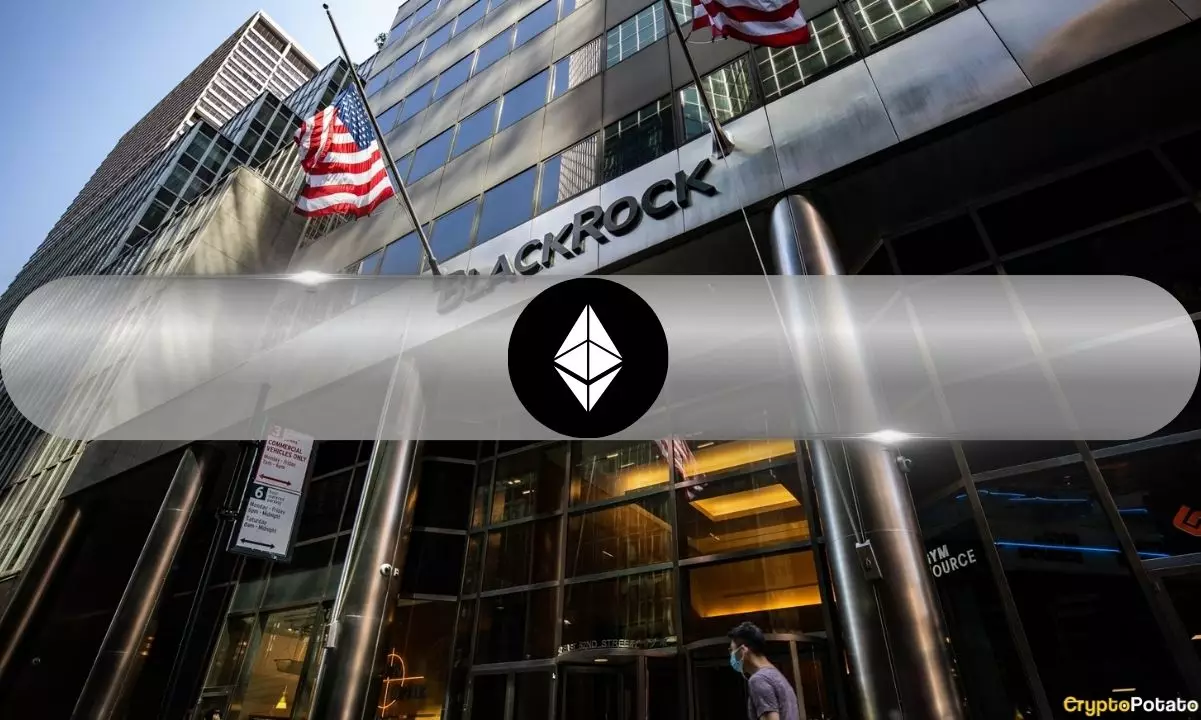The cryptocurrency landscape is notorious for its volatility and unpredictability. Yet, in April 2023, Ethereum made headlines with a significant endorsement from a titan of the financial world—BlackRock. The asset management giant, with its eye on tokenization, announced plans to implement a new asset class known as “DLT Shares” for its $150 billion Treasury Trust Fund. This move, praised by industry veterans, signifies a pivotal moment not just for Ethereum, but for the entire framework of real-world asset integration into the blockchain domain.
The Mechanics of Tokenization
Tokenization of assets isn’t just a buzzword; it’s the key to unlocking an entirely new economic paradigm. With BlackRock’s proposal, ownership can be tracked through blockchain technology, an innovation that promises to enhance liquidity and accelerate transaction processes. Traditional finance operates under a cumbersome regime where transactions stretch laboriously over days. BlackRock’s Larry Fink aptly pointed out that with tokenization, these transactions could clear in seconds, opening avenues for reinvestment and renewed economic vigor. This perspective aligns neatly with Ethereum’s capabilities, reinforcing the notion that this blockchain ecosystem is more than just a cryptocurrency—it’s a driving force in redefining investment paradigms.
Institutional Interest: A Sign of Maturity
Eric Connor, a former Ethereum developer, encapsulated the sentiment of many when he declared this development a “monster win” for Ethereum. Recent data reveals that BlackRock’s strategic play is merely the tip of the iceberg, as institutional players are increasingly favoring the Ethereum platform due to its robust security features and credibility. Ethereum’s overwhelming market dominance—exceeding 56% in the sphere of real-world asset tokenization—coupled with approximately $6.2 billion in assets tokenized on-chain, underscores its critical role in this emergent landscape.
It’s no longer just tech enthusiasts or independent investors keeping the crypto flame alive. Traditional finance is increasingly recognizing the potential of assets outside conventional boundaries, and Ethereum’s leadership in this tokenization journey has set the stage for broader adoption. The surprising fact that 93% of BlackRock’s USD Institutional Digital Liquidity Fund is based on Ethereum reflects an acute awareness among institutional investors of where the future lies.
The Contradiction: Price Versus Potential
Despite its promising fundamentals, Ethereum remains trapped in a bear market, hovering around the $1,800 mark. This disconnect between soaring institutional interest and stagnant price performance raises eyebrows. One must question whether the current market is simply lagging behind the actual technological advancements and institutional investments that are now afoot. ETH has notably declined nearly 50% since the beginning of the year and remains a staggering 63% down from its all-time high in 2021. Yet, against this backdrop of declining prices, there’s a buoyant belief that ETH might regain its footing, flirting with five-figure valuations in the not-too-distant future.
In the context of BlackRock’s acquisition of $162 million in Ether through their spot ETH ETF, there seems to be a silver lining. Perhaps now, with institutional heavyweights backing Ethereum, this “discounted” Ether could spark a revival. The collective wisdom among analysts leans towards optimism, indicating that once the market absorbs these developments, ETH prices could surge dramatically.
What Lies Ahead? A Convergence of TradFi and Crypto
As the barriers between traditional finance (TradFi) and the crypto world continue to dissolve, Ethereum stands at the forefront of this convergence. BlackRock’s bold move exemplifies a broader trend where industry titans are not merely dipping their toes into the crypto waters; they are diving in, fully committed to the long-term potential of digital assets.
The future looks bright not just for Ethereum, but for the broader acceptance of blockchain technology in mainstream financial practices. As Ethereum cements its position as the foundational layer for financial innovation and institutional investment, one cannot help but feel a tangible shift happening—a shift towards a more decentralized, efficient, and robust financial ecosystem. The stakes have never been higher, and the developments surrounding Ethereum are not just noteworthy; they could very well redefine the financial landscape for generations to come.

